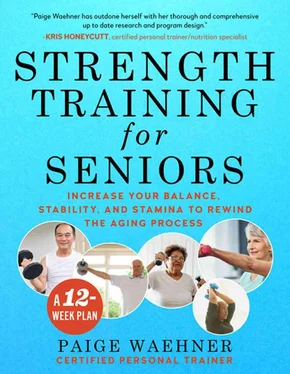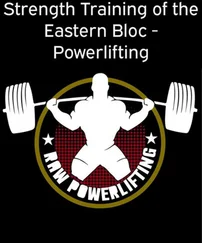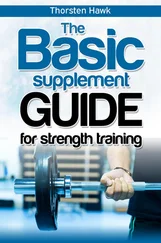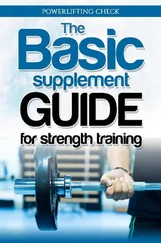vi.Core—Many people think the core only involves the abdominal muscles, but it actually includes your entire torso, including your abs, lower back, and pelvic area. Consider your core as your powerhouse, the origin of all basic movements and, of course, the muscles that protect your spine. You’ll do a variety of specific exercises to keep your core lean and strong for all your daily movements.
vii.Lower body—Your hips, glutes, thighs, calves, and feet are the bedrock of your body and where much of your strength comes from, whether you’re walking to the mailbox or getting in and out of your car. The lower body exercises you’ll do in this program, along with balance training, will give you such a strong base; there’s nothing you won’t be able to do.
b.Types of Resistance—The next part of resistance training is, of course, using something that challenges your muscles so that they can respond by growing stronger. That resistance can be your body weight, which will be something we focus on in the first few weeks of training. Beyond that, it can open up to include almost anything that adds weight to your exercises. This can include:
i.Dumbbells—Hand weights are the very foundation of basic strength training. They’re versatile, inexpensive, and you can use them for a variety of exercises. In this program, you’ll learn what weights you need and how to use them for different exercises.
ii.Barbells—While these aren’t included in this program, barbells may be something you choose to use in the future to up your game. These are adjustable weights that allow you to lift heavier and adapt to different exercises depending on your strength and fitness level. They usually come with a bar and a set of weighted plates that you can exchange depending on the exercise you’re doing.
iii.Resistance bands—These flexible bands are excellent for building both strength and endurance. They’re a favorite of mine because they’re inexpensive, take up very little room, and can be used for almost any exercise. What I like is that bands create a kind of tension you don’t experience with other types of equipment, firing your muscle fibers in a whole new way. You’ll use these throughout the program to add a more dynamic feel to some of your exercises.
iv.Medicine balls—These aren’t part of this particular program, but weighted balls can be used in place of almost any weighted exercise, giving you a different way to work your muscles.
v.Machines—Machines, whether you use them at home or at the gym, are also a great choice for adding resistance to different exercises. These are often a great fit for beginners because the machines are designed to guide you through the proper movement and you can typically use heavier weights because machines provide added support for your body.
c.Repetitions and Sets—Once you get your exercises and resistance sorted out, there’s the question of how many repetitions (reps) you do of an exercise as well as how many sets. The reps refer to how many times you do an exercise (say a biceps curl), while a set refers to how many times you do that exercise (say, one set of ten biceps curls). The idea behind this is that there is a range of repetitions of an exercise that will give you the most bang for your buck. And beyond that, you’re looking at diminishing returns.
i.Repetition ranges: What experts have found is that there’s a range of repetitions that serve different goals. These typically apply to athletes who want to compete in bodybuilding competitions or athletes excelling at other sports. Over time and with further studies, experts have found the different rep ranges to apply to almost any goal:
» 6-12 reps: This goes into the bodybuilder category where your goal is to build larger muscles as well as build strength. With those goals, you lift as much as you can for those reps, meaning the very last rep is usually the very last rep one can do with good form.
» 8-12 reps: Here we get into the middle ground of weight training, with a focus on building muscle and strength and, for those of us without a competition in the works, this is the sweet spot of strength training.
» 12-16 reps: For this rep range, the focus is on building endurance, although you can also build strength and muscle within this range. This range is ideal for those of us working on balance, stability, strength, and endurance and you’ll find that many of the exercises you do within this program fall within this range.
ii.Sets: Just as experts have studied just how many repetitions you do per exercise, they also know that doing a certain number of sets can make a difference in strength and fitness. For older adults, as well as any new exerciser, experts agree that starting out with one set is usually enough stimulus to build strength and muscle. You’ll find that, throughout the program, you’ll start each workout with one set and progress to two sets in the following time period.
d.Rest Between Sets—One other aspect of strength training involves resting between sets. This is a question many new exercisers have: If you’re going to do 10 reps of an exercise, then rest and do another 10 reps, why not do 20 reps? It’s a good question and one that experts have figured out. The point of resting between sets is to maximize your muscle’s time under tension for those reps. Once those muscles are fatigued, you give them a break to recover and then do the next set, which is how you build more strength and endurance. For heavy lifters, the rest between sets can be several minutes but for those of us wanting to get fit and strong, that rest period is usually much shorter, between 10 and 60 seconds.
e.Recovery Days—While working out is important, what’s even more important is taking time to rest and recover between workouts. This is especially true of strength training workouts because here’s one thing to understand: You don’t want to work the same muscles two days in a row. That means, if you work your arms today, you want to give yourself at least a day before you work them again. That time allows your muscles to recover and grow. This knowledge helps us create a workout schedule that allows for maximum growth while also building in rest periods.
Chapter 2
Why You Should Lift Weights
There are so many reasons you should lift weights—that could be a whole separate book. For a lot of us growing up, it was either something we did in gym class because we had to or something competitors did. The average person didn’t even consider lifting weights for any reason.
Now we know that, at its basic level, lifting weights resonates within our very cells. There are structural changes that happen at the cellular level that lead to some of our biggest challenges as we grow older. It often feels inevitable but, believe it or not, there are things we can do about some of these changes and, yes, it starts in the cells of our bodies.
There are functional consequences of aging that most of us have probably experienced once we get past forty. These consequences include reductions in:
✓ Accuracy
✓ Speed
✓ Range
✓ Endurance
✓ Coordination
✓ Stability
✓ Strength
✓ Flexibility
All of these physical facets affect our daily lives and determine just how independent we are as we get older. In fact, low activity levels end up causing physical declines that, eventually, can lead to frailty.
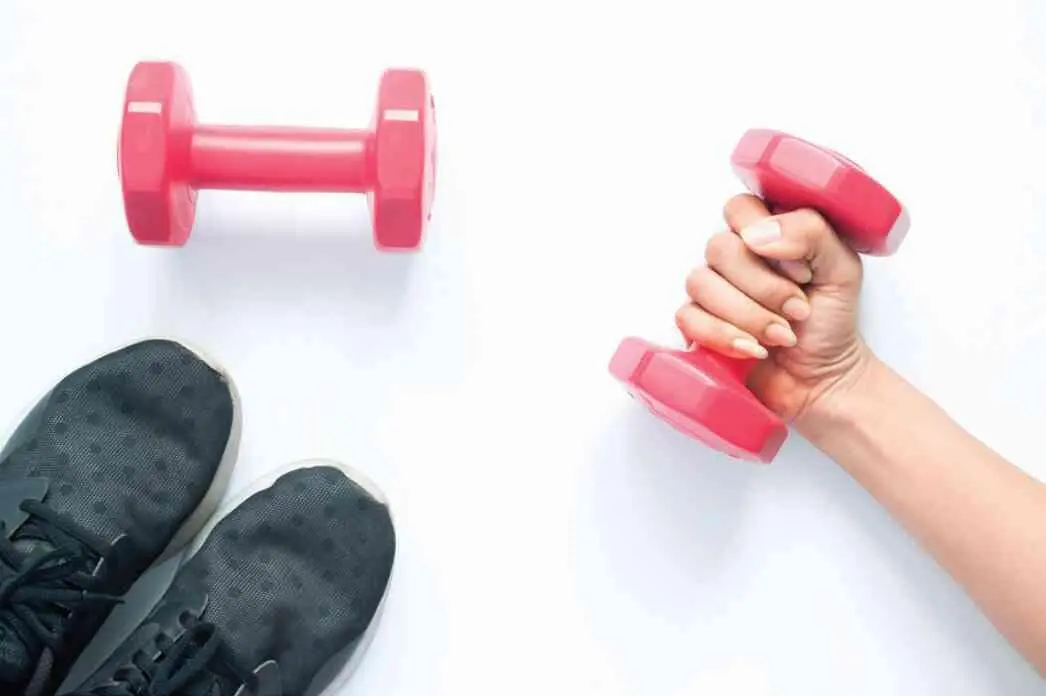
Getty Images
Frailty is a state of vulnerability which is caused by functional impairment of everyday activities. This is also associated with sarcopenia, which is the loss of muscle mass that can happen with age.
Читать дальше
